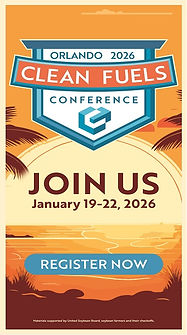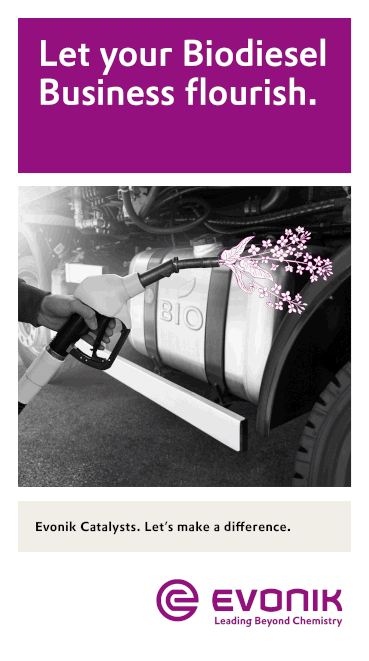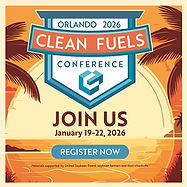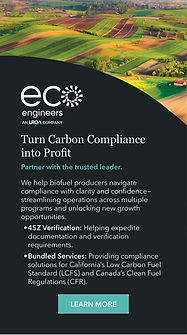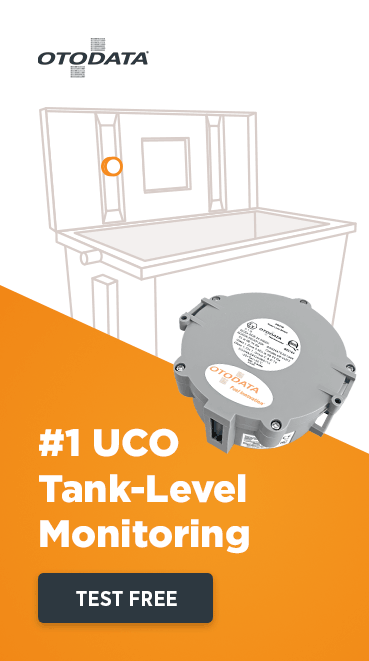Pondering Pretreatment
- Ron Kotrba

- Jun 24, 2024
- 8 min read

Biobased Diesel™ conducts a Q&A with Manfred Baumgartner, CEO of BDI-BioEnergy International, about the company’s foray into renewable diesel pretreatment.
Q: What led to BDI’s desire to enter the renewable diesel and sustainable aviation fuel (SAF) refining market with its Advanced PreTreatment technology?
A: It was a logical decision for BDI to enter this market, as our knowledge about feedstock purification dates back to the beginning of our business with biodiesel [in 1996]. These days, the most sought-after feedstock for renewable diesel or SAF are waste oils. At BDI, we decided already back in the mid-1990s to focus on waste oils for biodiesel production. So, we developed technologies for biodiesel production especially designed for the properties of waste oils. If a plant is to run smoothly and without unexpected disruptions, proper pretreatment of the waste oils is necessary. We have gained extensive knowledge about this topic over the years.
Q: How does BDI’s Advanced PreTreatment system for renewable diesel and SAF differ from other available pretreatment systems?
A: There are different technical approaches on the market. BDI is able to deliver a wide range of technical solutions, which are used in a modular approach. In other words, we add specific process units, depending on feedstock, product and customer requirements.
I want to highlight two main differences. Our first process unit is called the PrePurification process, which is the key for using waste oils. This process has been proven since 1998 and has many advantages. It purifies the feedstock using a very robust technology, which is necessary for the kind of impurities in waste oils. All impurities have to be taken out in an efficient way, as they can create a gluey sludge. The system is therefore designed in a way to handle this without issue.
This process entails an initial washing stage followed by a three-phase centrifugation using a horizontal centrifuge called a decanter. If one were to use a vertical centrifuge—a disc separator—the risk of fouling inside the machine (followed by a shutdown and cleaning actions) would be increased. In addition to this higher plant availability, the yield is also higher with our PrePurification process, as there is no excess oil loss during this first process unit.
There is a second noteworthy unique selling point at BDI, which I want to highlight. We have nearly 30 years of expertise in handling waste oils. This knowledge results in a very flexible plant design and plant operation. First, we take all feedstock properties into consideration for the design. I think it can be explained by the following: If we are designing a plant for vegetable oils, where the feedstock properties and quality stay very constant, the plant design will be much more streamlined. If waste oils are the feedstock, we design the equipment to be bigger, we consider fouling in a different way and we use different technical solutions. Secondly, when it comes to plant operation, our customers value our flexible design of the process-control system. Waste oils can be different each day and this means that plant operators have to react, change settings, optimize recipes and adapt plant operations accordingly. This flexibility, attained through years of experience with waste oils, is not only essential but also significantly pays off.
Q: Could you describe the different stages of BDI’s Advanced PreTreatment process?
A: Different feedstocks and their qualities and customer requirements result in a certain plant configuration. Our modular approach of different process units is the basis for the final plant configuration.
Let me describe a standard process. It starts with our PrePurification as explained earlier and is followed by a second acidic washing stage using a vertical centrifuge. This is important in order to reduce water-soluble components as much as possible. Afterwards, we need to dry the feedstock in a flash-vacuum dryer to a level appropriate for the next process unit.
In the adsorption process, filter media are added to adsorb the remaining impurities. Special types of bleaching clay are mostly used as adsorbents, but there are also cellulosic and silica-based types available. The selection of the right adsorbents for the application is part of our expertise.
The adsorbent is added to the oil and mixed for a certain time and afterwards filtered by a so-called pressure leaf filter. The filter cake is de-oiled and discharged. The filtered oil is moved to a polishing step to get out all fine solid particles.
Aside from PrePurification, this might sound like a standard setup—however, our experience with waste oils and the BDI design, as explained earlier, result in many small details, which characterize the BDI Advanced PreTreatment process.
In addition, other process units like polyethylene removal, deacidification, a second adsorption process or a final drying stage are also necessary for certain applications.
On the other hand, we also offer so-called high-temperature processes for removing impurities. This process configuration can reduce impurities to a lower level and can be beneficial for certain feedstocks, if the higher operating costs and the gained feedstock qualities are profitable.
Q: How might the needs or requirements of a prospective client determine the layout or steps included in their particular pretreatment design?
A: It is very important to consider customer requirements, site conditions or other customer aspects in the overall plant design as early as possible. A proper “project development” in an early stage is ensuring a safe investment calculation and a short project schedule. We at BDI support our customers in this regard, not only for the core process configuration, but also for the surroundings and infrastructure. Very often we start a project with pre-engineering, during which all these aspects are considered.
One important example is the planning of the logistics on site. It starts with parking of trucks, sampling of the shipment—very important for waste oils—route optimization and so on. Another example is the solid handling on site. We bring in adsorbents and manage the removal of solid impurities of the feedstock and spent adsorbents. The movement of these solids requires a smart layout design, which we are happy to provide and optimize together with our customers.
Q: What differentiates BDI’s basic pretreatment design for renewable diesel versus biodiesel?
A: There is a clear answer—a hydrogenation process requires a much higher purity of the feedstock in order to lengthen catalyst lifetimes. Therefore, the pretreatment process also has to be more sophisticated. Different biodiesel technologies require different pretreatment levels.
The required high quality using reasonable operating and capital expenditures (opex and capex) logically exclude some feedstock types or qualities for this business—for example, extremely degraded feedstocks such as trap greases, or split fatty acids from soapstock splitting. However, these feedstocks can be processed into fatty acid methyl esters (FAME) using the appropriate biodiesel technology, such as our RepCat process.
Q: Can you share any references for a BDI system designed for renewable diesel/SAF feedstock pretreatment?
A: First, I want to mention a few highlights, which show our extensive expertise with waste oils. Our first pretreatment unit for used cooking oil (UCO) commenced operations in 1998, followed by one built in 2002 for animal fat, and palm-oil mill effluent (POME) purification in 2014. These plants and others show how we have been forerunners in this industry and evidence our experience.
Our latest plant configuration of our Advanced PreTreatment system for the renewable diesel/SAF industry is providing outstanding results and reaching lowest impurity parameters. These projects are all currently underway and we are working with very well-known customers. However, there are nondisclosure agreements (NDAs) in place and thus we are not allowed to speak about these projects. We take this very seriously to protect the business approach of our customers.
Q: I understand it may be difficult to enter a new market like renewable diesel or SAF in which large petroleum refiners are the prospective customers versus smaller-scale, independent biodiesel producers. Can you describe to me what challenges BDI has faced in gaining traction in this market?
A: You are right, there are new challenges with these customers. During the first discussions with refiners, before starting a project, we focus on a few topics that we need to explain to our customers and educate them on.
First, we need to explain the properties of the different feedstocks and the technical possibilities to treat them. For example, it makes no sense to use a feedstock with high free fatty acids (FFA) for coprocessing, where only low FFA are allowed. Capex and opex might be too high for certain feedstock configurations. However, with blending in certain quantities, the feedstock concept might be feasible.
Another topic is refinery standards. Refineries are all designed according to American Petroleum Institute standards, and in our business, we are used to typical chemical-engineering standards. We also can build plants according to API standards, but the investment will be about 40 percent more.
The topic of standards can get even more sophisticated. Big companies—with refineries of course being very big indeed—do have their own company standards. There are topics like details of the steel-structure design, typical pump-frame design, standards for sampling, and so on. For fulfilling these standards, a lot of additional engineering hours are needed.
So, we need to clarify, first, which standards are applicable in a new project in order to consider them in our price calculation.
Most of the refineries also have a well-defined project workflow with certain milestones. The projects are divided into phases: feasibility, definition and execution. And these phases are mostly split into two parts. There is a management review after each phase and a decision for moving ahead. This concept has its advantages, but the project schedule might be lengthened to up to five to seven years. If we compare the project schedule with a standard engineering, procurement and construction (EPC) project in our previous business, we took about two to three years for a full project execution. The project schedule does of course have a big impact on the business, especially as our customers are fighting for feedstock supply. The quicker a project is completed, the earlier the feedstock can be secured for it.
Q: How might BDI’s new parent companies affect how or where you seek to gain greater market share in this sector?
A: Our new owners, EOSS, Rieckermann and KVT Technology are all bringing in different new business opportunities. This means that BDI is moving into an interesting and dynamic future. Particularly with renewable diesel and SAF—our partnership with Rieckermann marks our entry into what is, for us, a new market. Rieckermann is a group of companies with a big customer base, active in the Asian market, and we are already working on new project opportunities, which hold considerable potential for growth.
Q: Is there anything else you would like to share with me?
A: There is one topic I would like to elaborate on. The goal of processing waste oils in a pretreatment process is to achieve the lowest possible amount of impurities at the end. Low phosphorous and metal contents lengthen the lifetime of the very expensive catalysts of a hydrogenation unit. We at BDI support our customers in achieving the best product results by transferring all of our knowledge in this field to manage production in the best way. We have developed a method to run and optimize a pretreatment plant, called Analytical Management. By analyzing feedstock, standardizing lab testing of feedstock, and analyzing the results of all production units and product qualities, we optimize the plant operation in order to minimize operating costs and maximize product quality.
Furthermore, we are able to implement this system in a semiautomated way using Advanced Process Control, which uses past data, mathematical models or artificial intelligence (AI) in order to optimize the process.










